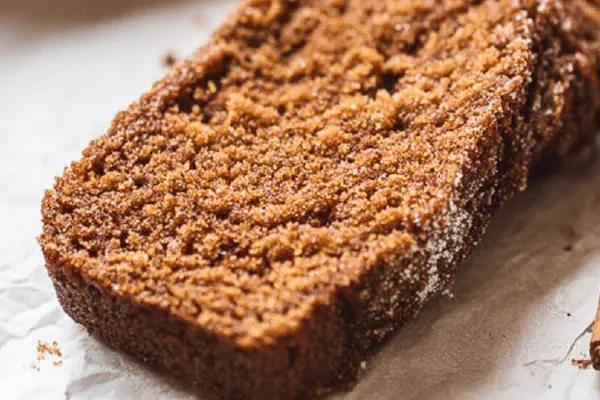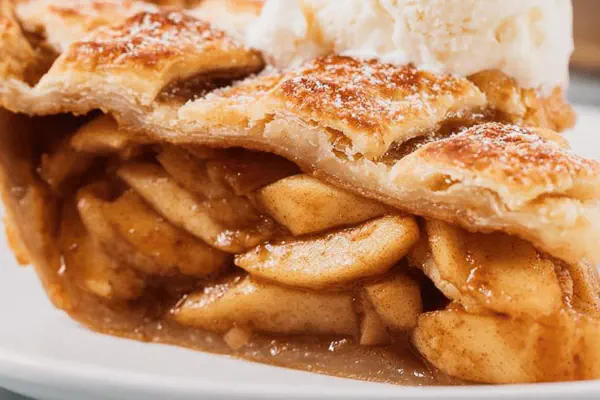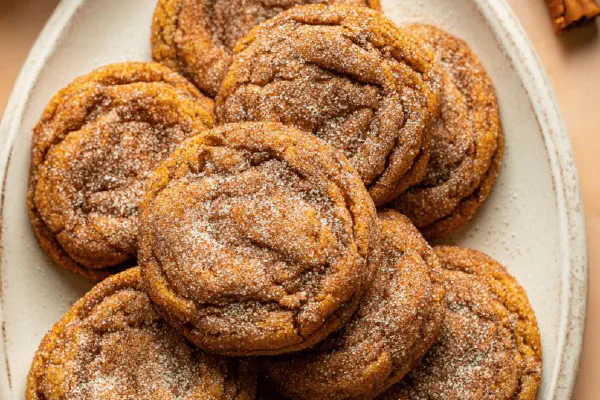Molasses Gingerbread Loaf

By Emma
Certified Culinary Professional
Ingredients
- 1 7/8 cups all-purpose flour
- 2 tsp ground ginger
- 1 1/4 tsp ground cinnamon
- 1/4 tsp ground cloves
- 1/2 tsp freshly grated nutmeg
- 1/2 tsp salt
- 1 1/4 tsp baking powder
- 3/4 tsp baking soda
- 6 tbsp unsalted butter softened
- 3/4 cup packed brown sugar
- 1 large egg
- 1 tsp vanilla extract
- 1/3 cup molasses
- 2/3 cup hot water
FOR FROSTING===
- 3 tbsp unsalted butter softened
- 4 oz cream cheese softened
- 1 tbsp molasses
- 1/2 tsp ground cinnamon
- Pinch sea salt
- 1 1/4 cups powdered sugar sifted
About the ingredients
Method
- Heat oven to 350°F. Grease 9×5 inch loaf pan with nonstick spray. I use a brush and a little oil if spray is out.
- Whisk flour, ginger, cinnamon, cloves, nutmeg, salt, baking powder, baking soda in medium bowl. No lumps here. Once combined, set aside.
- In a large mixing bowl, cream softened butter and brown sugar with a hand mixer until fluffy—about 1:30 to 2 min. Don't skip fluffiness, creates light crumb.
- Add egg and vanilla. Mix till fully combined, but no more. Batter shines from well incorporated egg strands.
- In separate cup, whisk molasses into hot water. Hot water unlocks molasses flavors, prevents clumps. Pour in thirds alternating with flour mix into butter bowl. Fold gently — batter thick but pliable. Overmix = dense.
- Scrape batter into pan. Smooth top with spatula. Not perfectly flat, slight ridges okay.
- Bake approx 40 min, or until toothpick in center comes out with few moist crumbs—not wet batter. Cracks on top deepen, smell deepens. Oven hum changes subtly.
- Rest loaf on rack 15 min after out of oven for crumb to stabilize; helps with slicing.
- For frosting: Beat butter and cream cheese till molten and silky, no lumps. Add molasses, cinnamon, salt—mix well; frosting smells like fall. Slowly fold in powdered sugar till thick enough to spread but creamy.
- Spread frosting on cooled loaf—if warm, frosting melts. Sprinkle cinnamon dust on top and chill for an hour to set frosting; patience worth it. If impatience strikes, fridge helps speed firming.
- Slice with serrated knife to avoid crumbling. Store covered at room temp max 2 days or refrigerated for 4 days, bring to room temp before serving.
Cooking tips
Chef's notes
- 💡 Butter softened not melted. Creaming matters — mix 'til fluffy, tiny air bubbles hidden but present. That sets crumb texture. Brown sugar packed but not squashed. Light fluff to preserve moisture. Overmix flour ruins crumb. Fold gently to keep air. Hot water for molasses dissolves it; cold water traps clumps, dry spots inside. Pour molasses water in thirds, alternate w flour. Batter thick but pliable, almost sticky.
- 💡 Oven sounds tell time — faint hum changes near done. Toothpick test more than clock; moist crumbs cling, no wet raw batter. Top cracks deepen, smell rounds deeper. Don't trust timer alone. If cracks shallow, check inside. Visual cues win hands down. Wait for 15 minutes cooling on rack. Crumb stabilizes, slices better, less crumble. Taking loaf out too soon = dense, tough inside.
- 💡 Frosting chill thickens texture; beat butter and cream cheese till silky but not warm to melt sugar. Add molasses, cinnamon, salt—spicy, earthy scent rises. Powdered sugar sifted, folded slowly, no lumps. Spread only on completely cooled loaf or frosting melts off. Sprinkle cinnamon dust last step; looks inviting, adds subtle aroma. Chill at least an hour. Patience stops runny frosting issues.
- 💡 Use star anise instead of cloves if curious; adds bright warmth—watch amounts, too much dominates. Flour all-purpose backbone; cake flour possible but changes crumb lightness. Vanilla, egg bind with air to keep tender. Baking powder and soda balance rise and color; salt rounds flavor sharpness. Pan size matters—9×5 loaf pan critical for even cooking.
- 💡 Scrape batter gently into pan. Smooth top but slight ridges okay — no tapping needed. Oven temp steady at 350°F avoids cracking or drying edges. Use nonstick spray, brush with oil if none. Slice cooled loaf with serrated knife to cut crumb without crumbling. Store covered at room temp two days max; fridge extends freshness 4 days—bring back to room temp before serving. Moisture loss happens too fast uncovered.
Common questions
Why fold flour gently?
Keeps air in batter. Overmixing gluten activates, results tough crumb. Folding stops dense texture. Use spoon or spatula, slow moves. Avoid beating flour in. Batters thick, pliable, little stretch when mixed properly.
Can I substitute star anise?
Use ground cloves back if unsure star anise too strong. Anise adds brightness, cloves deeper sharpness. Both work but flavor shifts. For no anise, use all cloves. Adjust spices to taste, start smaller amounts.
What if frosting too runny?
Chill longer. Beat butter and cheese well before adding sugar. Powdered sugar must be sifted. Warm ingredients cause melting; keep cool. Can add more sugar to thicken but affects sweetness. Refrigerate frosting if stuck. Spread when loaf cool enough to prevent melting.
How to store gingerbread?
Wrap airtight. Room temp best for couple days, fridge extends 4 days but dries out if uncovered. Bring to room temp then frost or serve. Can freeze wrapped tightly, thaw fully before frosting or slicing. Moisture retention key to softness.



